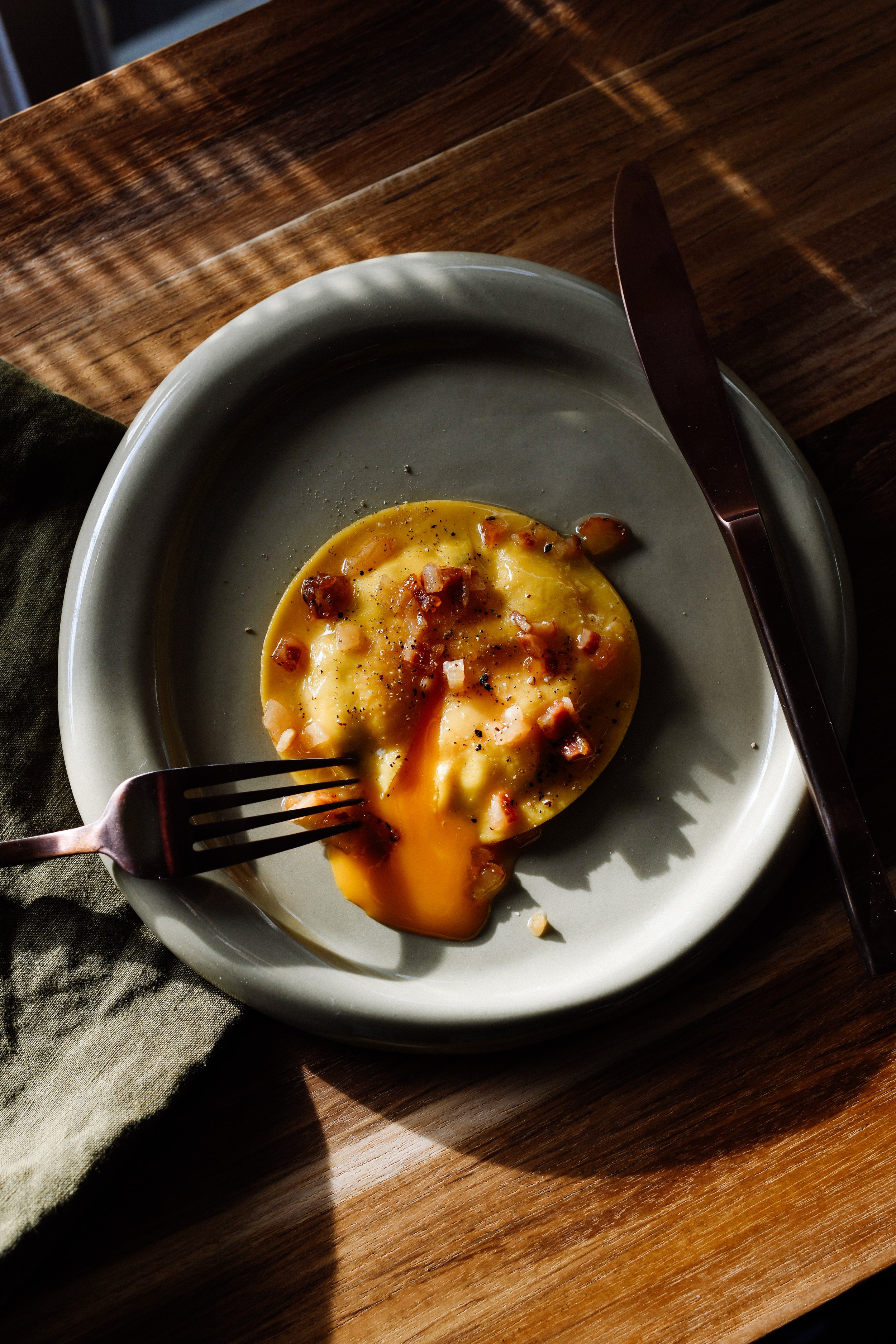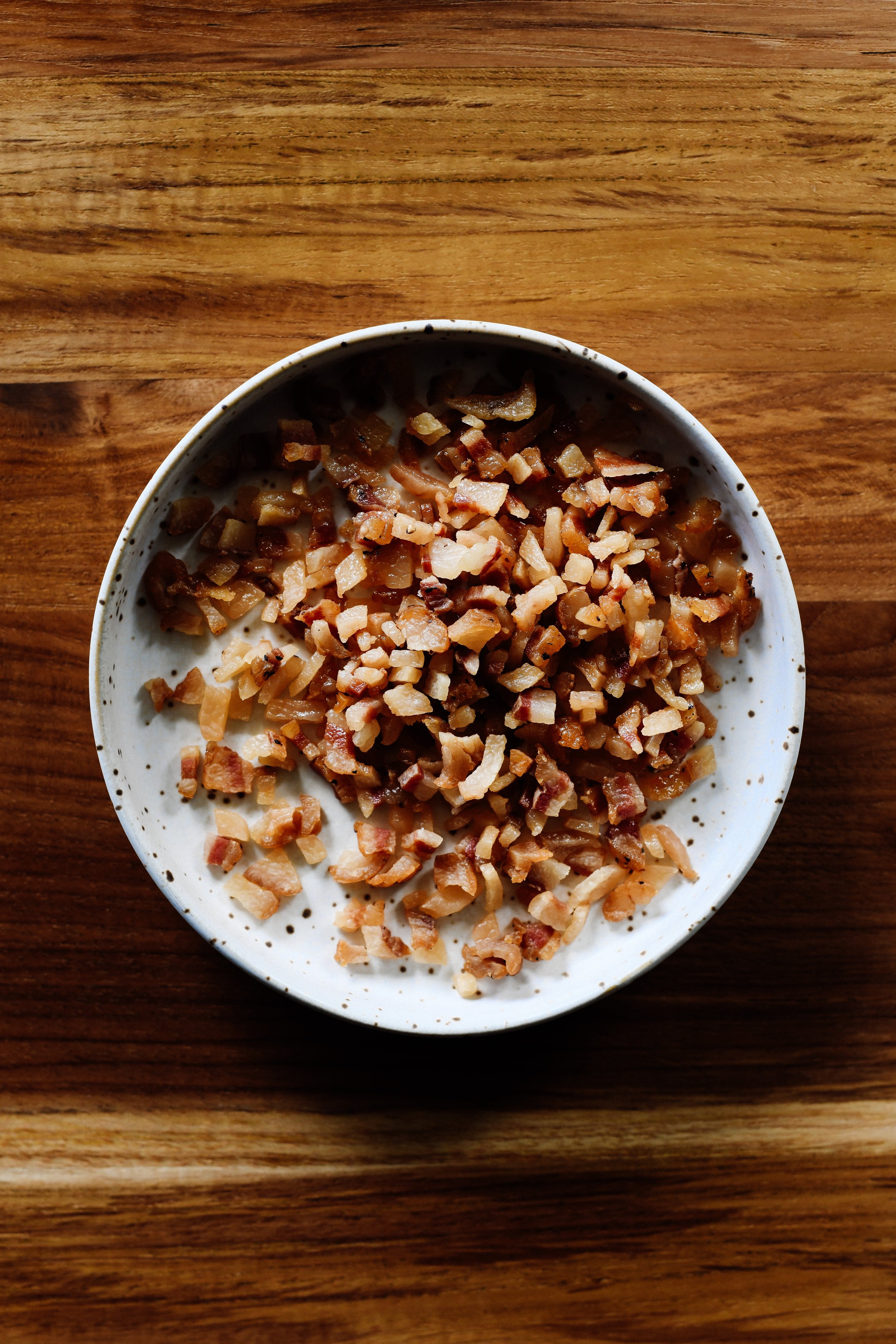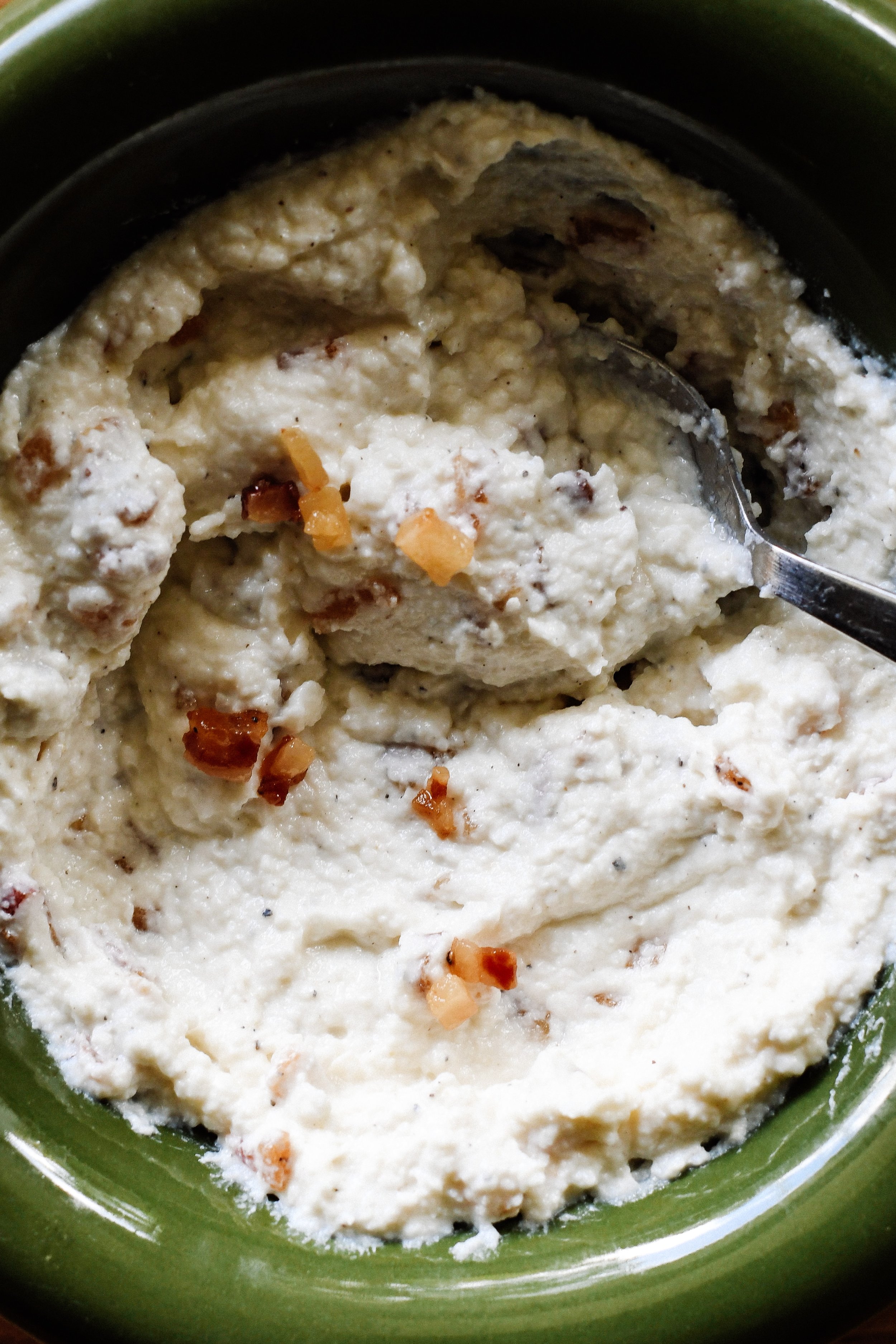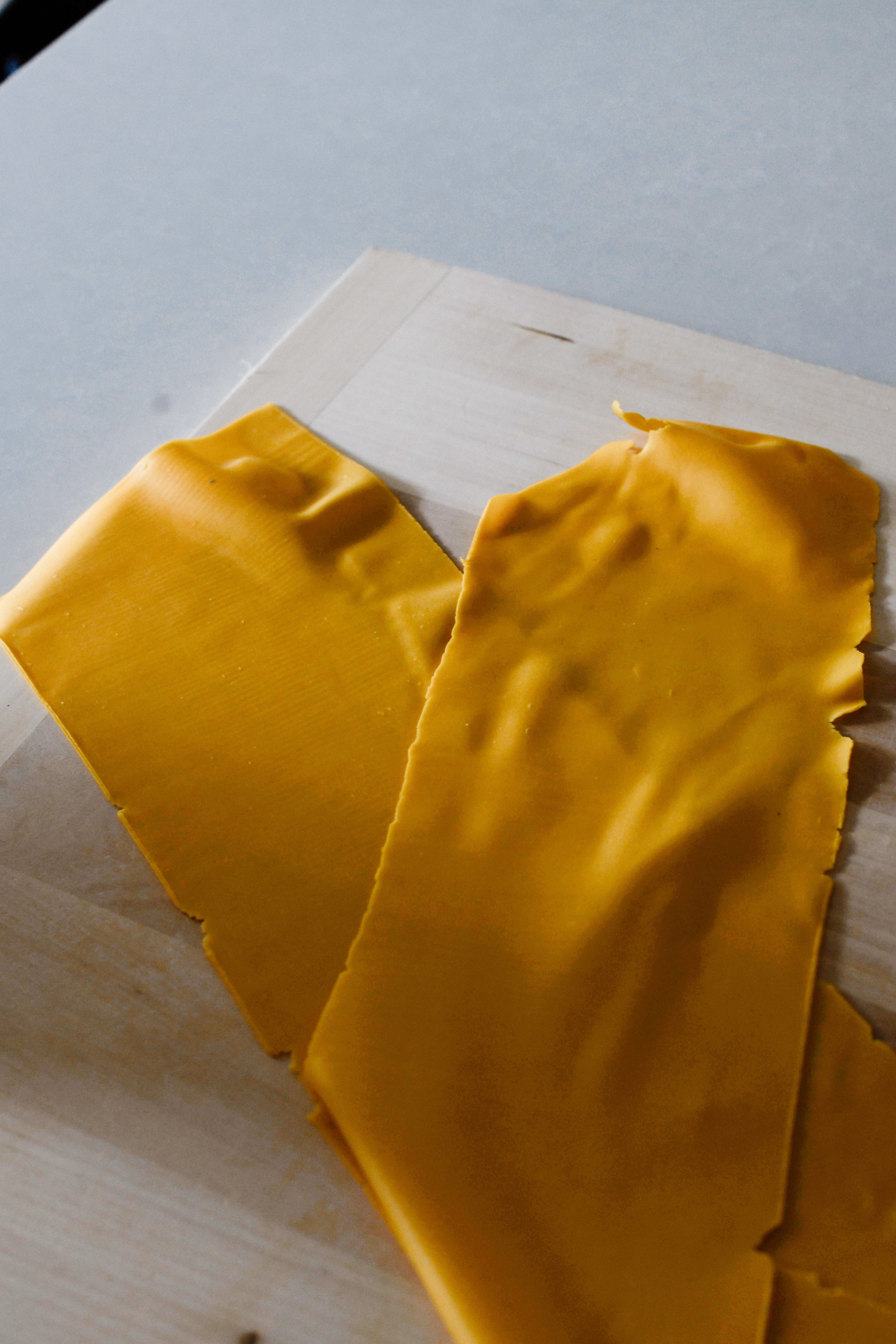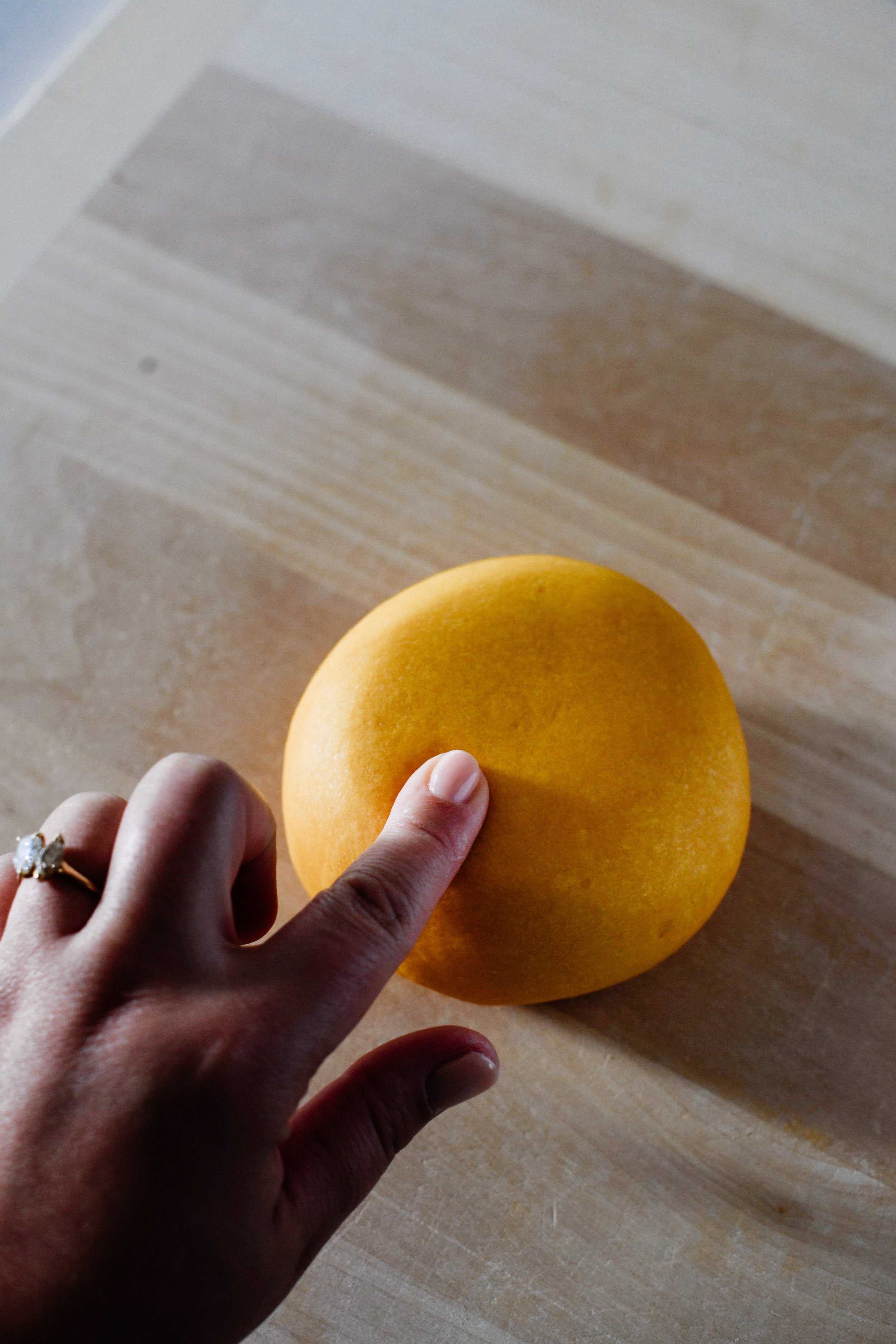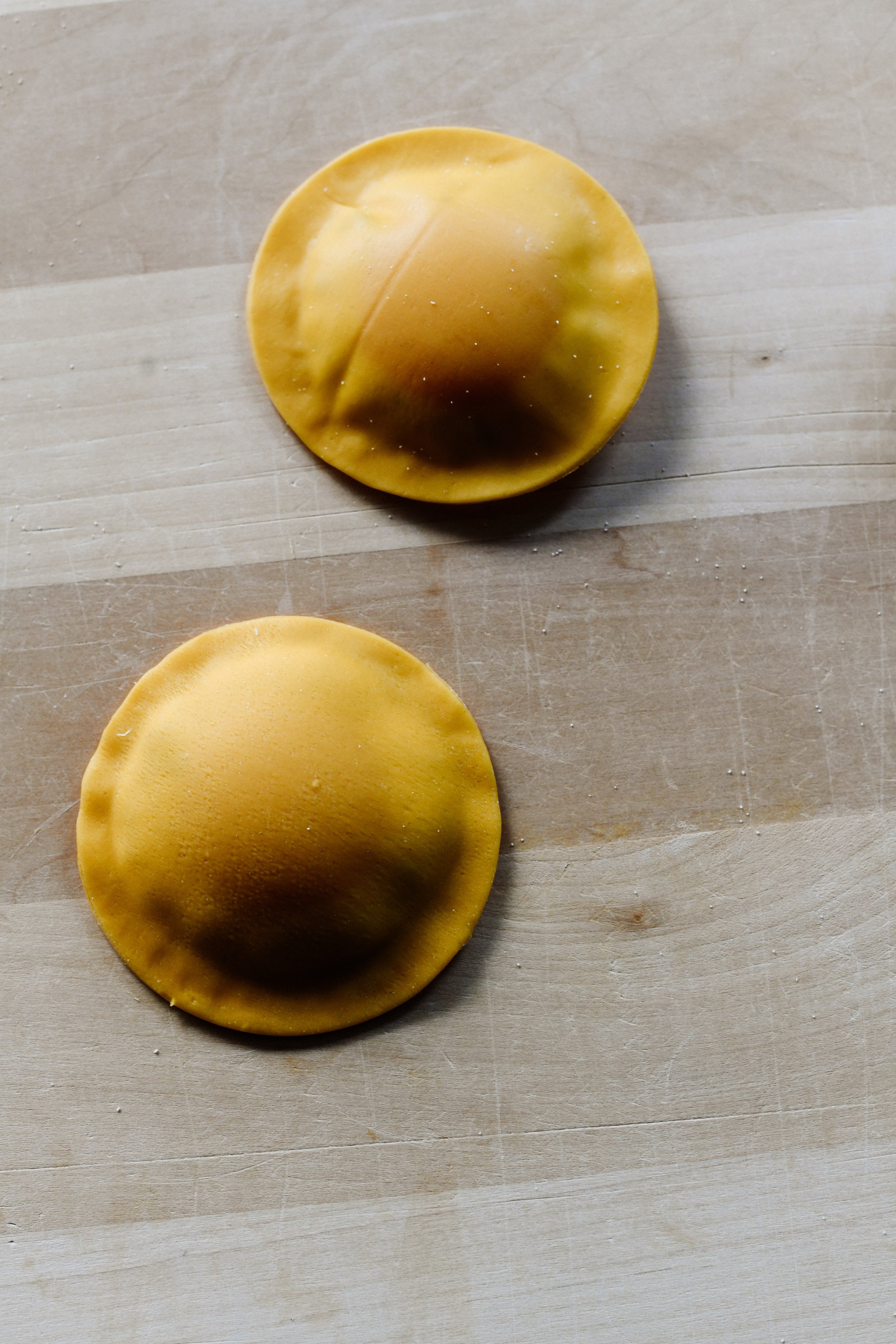Carbonara Raviolo all’uovo
Carbonara does not do things by halves. It is truly pure decadence. It’s rich, it’s fatty, it’s unapologetic. It has a few simple ingredients - eggs, cheese, guanciale - and it’s (IMO) heaven on a plate.
Decadence, being the key theme here, this raviolo is a take on a classic all’uovo preparation, where an egg yolk is nestled into the centre of a sheet of dough, surrounded by a padding of filling (usually ricotta), and cooked relatively briefly to ensure the yolk remains runny. In order to bring that classic carbonara flavour through, the filling is a pecorino heavy mix of ricotta, with small bits of crispy guanciale folded through. Served with a spoonful of extra guanciale just for good measure, when you cut into it and mix the yolk, pecorino and guanciale together, it sings. It’s carbonara.
The key to shaping is to take your time ensuring as much air as possible is pressed out around the filling, while being mindful not to disturb the yolk aggressively. It is a delicate process, so go into making this with the right mindset.
Now, it’s time to address the elephant in the room:
“but what do you do with all of the egg whites?”
I get asked this a lot and really simply, I store them in the fridge to add to omelettes. I don’t prepare sweet treats too often, but if I did, I’d consider working them into a pavlova or amaretti.
Carbonara Raviolo all'uovo
Makes 10 raviolo
Ingredients
Pasta dough
200g tipo 00
186g egg yolks (roughly 12 eggs)
Fine semolina (for dusting)
Filling
70g Pecorino Romano, finely grated
1/3 cup hot water
100g ricotta
1 tsp ground black pepper
50g guanciale, finely diced
10 egg yolks
Finishing touches
70g guanciale, finely diced
Method
Pasta Dough
Place the flour in a mound on your work surface and make a well in the centre.
Add your egg yolks and begin to whisk to until you have a thick custard-like consistency, incorporating a little bit of flour as you do.
Switch to a bench scraper and start to flip the flour from the outer edge over and onto the eggs, using a cutting motion to then mix it in. Continue to do this around all sides until you have a shaggy dough.
Begin kneading the dough vigorously for a good 10 minutes until the dough is springy and elastic, and not sticking to your hands at all
Cover and rest for 30 minutes while you make the filling.
Note: this yolk dough is 93% hydrated which makes it a little easier to work with. If however, you find it is very dry, wet your hands and return to the dough and continue kneading.
Filling
Add the grated pecorino to a large bowl and stir in the hot water - mix well to form a paste.
Add the ricotta and black pepper and whisk everything together until well combined - set aside.
In a cold dry pan, gently cook the guanciale until crispy. Use a slotted spoon to remove the guanciale from the pan and onto some kitchen paper to absorb the excess oil.
Once cool, fold the guanciale into the pecorino cream filling.
Transfer to a piping bag and rest in the fridge until needed.
Shaping the raviolo
Divide the dough into four pieces. Work with one at a time - flatten the piece with your hand or a rolling pin before passing it through the thickest setting on your pasta machine. Fold the edges in to create a neat rectangle that fits the width of your pasta machine, and run it through the thickest setting again until your dough is uniform in shape
Continue passing your dough through the machine, working through each thickness setting until it’s 1/16” thick, typically the third to last setting on most machines.
Cut the sheet of dough into sections for you have a few smaller pieces to work with. Pipe a ring of the the filling on one section, creating just enough space for an egg yolk to fit in.
Gently place an egg yolk in the centre of the filling, then place another section of the pasta sheet over the top.
Carefully work your way around the filling to press the air out as much as possible, while protecting the integrity of the yolk.
Use your fingers to gently press and flatten the outer edges of the pasta to ensure the two sheets are nice and thin.
Use the dull edge of a cookie cutter to gently work around the filling in a circular motion to ensure any extra air is removed, then cut the edges of the raviolo either with a knife (if you want a square shape), or a circular cutter like I’ve done here.
Very carefully place the raviolo on a baking sheet dusted with fine semolina. Continue with the rest of your dough, re-rolling any scraps of pasta from the previous raviolo.
Finishing touches
Bring a large pot of water to boil, season generously with salt.
Add the remaining guanciale to a cold dry pan and gently cook the guanciale until crispy.
Carefully drop the raviolo - two or three at a time - into the boiling water and cook for 1.5 minutes. If you’re cooking for a few people, consider having a couple of pans of water on the go so you can double up your batch.
Gently scoop out with a slotted spoon or spider, and place into the pan with the guanciale.
Be mindful not to toss or whirl the pan here as we want the egg yolks to remain intact. Gently spoon over some of the guanciale and its fat over each raviolo momentarily and serve immediately (1 or 2 per person).

